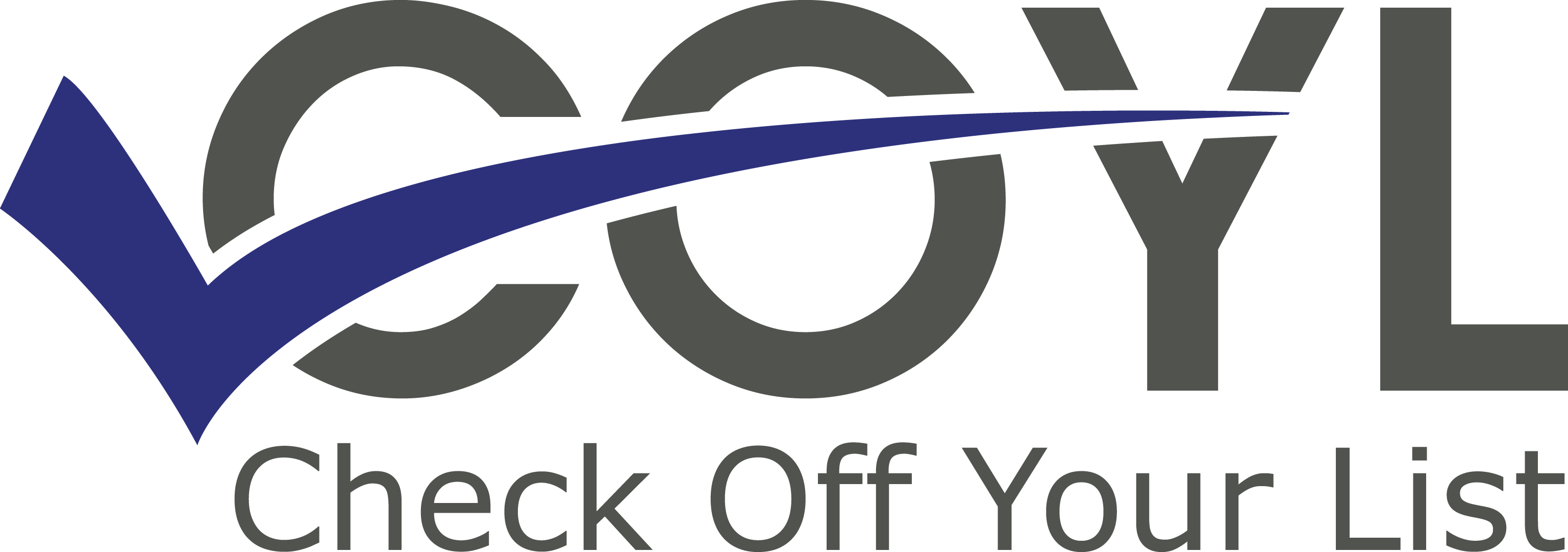Previous title: How to Hire a Virtual Assistant
As an actor, I’m fascinated by the various awards shows. I don’t always watch them, because life gets busy and my husband couldn’t care less. He’s just not into it. I check stats online though, and one of the things I find most fascinating are the awards for best actress. Probably because deep down, I compare myself to the lead to determine if I could do it better. In my mind, of course I’m better, but in reality, I mostly agree these women are beyond talented. If you don’t know much about show business, you might get the impression based on a best actor or best actress award that their performance alone is responsible for making or breaking a show. Or if it’s an award like best director you might be misled into thinking that the director’s vision is central, and everyone else is just a piece on the chessboard the director moves around to orchestrate their vision—this is commonly referred to as the auteur theory.
But those of us in showbusiness know that any production is an ensemble with innumerable moving parts, and it takes the talents of countless people to pull off a successful film or theatre production. I can attest from the best actor awards I’ve received, that I only earned those awards due to the guidance of the director and the performance of the other actors on stage… not to mention the costumers, light and sound technicians, and the list goes on. It truly takes a team, and the better a team functions, the better each aspect of that team shines.
Now, this is a business podcast, but I think you can see the correlation. Any production is also a business. Sure, a movie or a play tells a story, but they’re also selling tickets. They’re there to make money too, and the same principles apply in both worlds. Without effectiveness at all levels, a business won’t achieve its goals. This can be stressful for the owner, especially the owner who is used to being in absolute control, the auteur of the business, if you will. But for most businesses, the auteur theory, where the owner is completely in control of every minute detail of their business, doesn’t work after a certain point. There are just too many moving parts, which is why building a successful team is so essential.
Assembling a team of people like this is a win-win for everyone, but how do you find the right team members? After 10+ years of struggling through hiring, managing, and sometimes firing virtual assistants, I wanted to share some of the things I’ve learned about the process; ideally, learning from me will make the process more efficient and effective for you.
People often want to know who to hire. There are so many different types of Virtual Assistants as well as other business support companies. Which is right for you? The first step is determining what to outsource. If you’re still unsure who you need to add to your team because you don’t know what to outsource, I recommend you listen to Episode 5: How To Find What You’re Good At And Do It to help you determine which tasks to move to someone else’s to do list. There’s even a downloadable checklist to walk you through figuring out specific tasks you want removed from your to do list. But for now, I will summarize it by saying, you want to hire people who are good at what you aren’t good at and are excited to do what you dread doing. You want to surround yourself with a team of people who fill in your gaps, because that is what provides you with the most relief while providing the best results in your place, which is the goal. Right?
So for today, I’m going to assume you know what you want to outsource, and you know which technical skills to look for in a potential team member. The question at that point is, “Who do you hire?” You’re pouring over the many possibilities and several look promising. They all have the necessary technical skills, and they say they can do what you need them to do, but how do you know who will follow through when it comes to actually completing the work? I’ve failed in this area of hiring countless times over the years, so in an effort to save you the same lack of sleep and anxiety – You’re welcome – here are some things I’ve learned that help me make much better hires and lose way less sleep.
The first thing I messed up was failing to give a full picture of the position. I certainly didn’t try to hide aspects of what I needed, but I didn’t do a good job providing a realistic preview of the day to day responsibilities. Everyone knows the job on paper never fully covers the day-to-day experiences. We all see “and other duties as assigned” on job postings. It’s kind of unrealistic to type everything out on paper, but there are ways to accurately represent the requirements. Yet, I sometimes think my insecurities as a business owner and as a boss, especially in those first years growing my team, made me feel like I needed to sell the position, which is wrong. I didn’t realize how much of an opportunity I was offering and I hadn’t realized someone would be excited to do what I dreaded, so I tried to shed the position in as good a light as possible. That’s not helping anyone though.
Now anyone hiring is selling, but you’re not selling the position. You’re selling your company and the culture or atmosphere not the job. People will appreciate knowing what some of the pitfalls or struggles of a position might be. Remember, they are probably excited to tackle the tasks even though you aren’t, so the difficult aspects of the position might be a welcome challenge to them. Highlighting the duties that are more involved or require more technical abilities should be a major topic of conversation with anyone you consider adding to your team—this will tell you a lot about how they would approach those responsibilities and will help you gauge their interest in truly taking ownership of the most involved aspects of the position.
No one is going to love every aspect of any position. Misti, our amazing HR Manager at Check Off Your List, frequently says, “That’s why it’s called work and not play.” It’s simple, but it’s packed with hard truth. Every job, no matter how much you love it, has particulars that are not so enjoyable. The goal is to keep those to a minimum, when possible. Finding the team member who has the perfect balance between enjoyment of the responsibilities and motivation to tackle the difficult tasks is the key to hiring a Virtual Assistant that owns all aspects of the responsibilities given to them. As a result, that portion of your business is no longer on your to do list or your mind. It progresses successfully with minimal effort from you.
Another factor to consider is communication. Job requirements do change and evolve over time, so effective communication is essential for someone’s long term success in your business. This is one of the reasons evaluating communication skills and compatible communication styles are vital in hiring a Virtual Assistant and creating successful team dynamics as your business grows. Yeah, this sounds obvious, but it’s helpful to remember that communication in its myriad of forms comes more naturally to some than others. As you explore the possibility of working with someone, actually talking with the people you might work with to get a better understanding of how they think, how they communicate, and their overall demeanor often gives more insight into their potential success on your team and in your business than a resume can.
I don’t want to give the wrong impression, because it is difficult to know exactly how a new hire will fit into your business. That being said, you don’t have to just dive in and hope for the best. There’s more you can do to ensure mutual compatibility than hire someone just because they look good on paper then pray it all works out. There are a few easy things to implement to learn as much as you can about their responses in various situations – the soft skills and the things you can’t see on paper, because that’s what we’re all ultimately concerned about. Isn’t it? Will they fit in your business culture? Will they take ownership of the responsibilities? Will they meet a deadline? Will they actually do what they say they’ll do? These things aren’t outlined on resumes. But strategic interaction as you hire can tell you a lot of what you need to know to feel confident about a new addition to your team.
One of the best indicators of compatibility is determining their areas of communication strengths and weaknesses. Communication is key to any good relationship. We all know this, and work relationships are no different, so I test their communication skills in very intentional ways to learn very intentional things.
At the beginning of the process, after I determined the technical skills match, I request some action items in our e-mail communication. I ask a few multi-part questions to see how they answer. Did they address all aspects or only the first or last think I said? I include specific parameters about sending information that are easy to implement and convenient but require that they pay enough attention to do something like attach a document rather than send a link, or vise versa. All of this clues you in on how detail oriented they truly are and how attentively they follow specific directions. A Virtual Assistant with these qualities should capture everything you throw at them and deliver results in ways you expect because they pay attention to the little details of what you need.
If they follow directions well in the e-mail, and everything still seems like this person will fit on my team, I always pick up the phone to call a potential team member to ask some screener questions. If they’re not there, I leave a voicemail. The “test” at this point becomes will they return the phone call. You’d be surprised how many people don’t call back. When I get them on the phone, I ask for some information and specific examples of work to fill in any technical skill concerns that may be lingering. I realize people don’t always pick up the phone and call someone anymore, but I want to know how they handle themselves when they’re caught off guard – just a little. We get interrupted in life and we’re forced out of our comfort zone, so I want to see how they handle themselves when they’re not all ready and poised for an interview conversation. If the random call goes well and I decide to take it further from there, we schedule a video call.
How people react in the moment, when they have to think on their feet, tells you how they operate during the day to day, so I test that a few times during the hiring process. In the past, I sent out a few customer service style questions and asked them to respond to the questions as sample e-mails. This gives insight into how they deal with people. My HR team suggested we modify this to get a more realistic impression of their gut reaction in the moment, which is ultimately a better representation of how they will react in typical work scenarios. There’s not always time to evaluate and respond to a situation, so we ask these questions as part of the video call to get the best gauge on their natual instincts. Do they intuitively react in ways that align with the culture I’ve established for my business? Is their gut reaction similar to the standards I uphold for my business?
The conversations we have over the phone and during the video call just give a better feel of them as a person as well as how they react in real time, because that’s how life is. In an office, remote or in person, responsibilities aren’t always planned in advance. Hiccups and mistakes certainly aren’t planned, but they happen. And these strategic conversations are essential because it shows those little things that are actually big indicators about a person. It shows how they present themself in person. Do they log on at the designated time? Do they seem prepared? How quickly do they process information and act on it? Do they handle themselves professionally? I also like to see their face as we talk about the specific responsibilities, because their eyes will light up about the things they’re passionate about.
During all of these interactions, it’s important to keep everything conversational. Everyone is more comfortable, and let’s be honest, that’s how people naturally interact. Even when I’m prepared for a meeting, I don’t just blow through my questions without the relational aspect that comes with two people talking, listening and responding. Hiring shouldn’t be any different. Try to organically cover the information you need without merely listing questions. You’ll get a better picture of who they are on a regular basis rather than the picture they want to present in an interview. Guards go down on both sides, for you and them, as you really listen to ask follow up questions to learn more about what they say as well as guide the conversation to the other things you need to know. Obviously, some questions are hard to ‘hide’ as conversation, but for the most part, a two-way conversation provides more insight into the person than working through a list of questions.
All of this back and forth really lets you see through the lines of their resume and see how they fit into your culture, but I recommend some legwork before you even get to the conversation. A resume can look amazing. It says all the right things. They have all the right experience. Yet, they may not be able to get results when it comes right down to it. Testimonials are wonderful to gain insight into someone’s work ethic. I also like to see sample work to make sure their standard aligns with what I need, which I believe I mentioned earlier. Doing this prescreening before taking the time for a conversation is a time saver for you and for them. That bit of work up front allows you to determine whether they would be a great fit on a technical and surface level without dragging the process too far along and wasting a lot of time for everyone.
After you’ve seen some sample work you love and have had a conversation where you truly connect with your potential new team member, you should be ready to pull the trigger and say, “Yes. Take things off my to do list!” At this point, there’s no reason to delay sending tasks their way. Often times, people drag their feet through the hiring process, because they’re unsure about making the decision. They have fears of losing control or hiring the wrong person, but delaying the process only delays the inevitable and frustrates the work relationship before it even begins.
As business owners, we like control, that was one of the incentives when we began our journeys, being our own boss and making the final decision all day. As I said, we love the idea of the auteur. But, at some point in your entrepreneurial journey, you have to trust someone else and let things go. Once you’ve done your due diligence and find the perfect team member, hire them now. Start them with tasks and see what happens. There’s always a learning curve and trial period, but it should be minimal for the right person. Alissa, our customer relationship manager at Check Off Your List, says, “I trust but verify everything.” We give new team members freedom to do their job but start out checking everything. You need to be able to quickly stop checking things, because you don’t have time for that long term. It’s worth it at first though. That initial accountability ensures all expectations are clear, which is critical with any new addition to your team.
Every work relationship I have starts with specific instructions, then we monitor how it goes and adjust from there. This goes right back to giving a clear picture of what you need when you first start looking for someone to add to your team. Taking the time to fully outline all the aspects of a position continues to benefit you after you hire as well. Having very specific parameters of the expectations draws in the right team member and at the same time sets them up for success as they join your team, because they have a standard to look at as they strive to do their job.
I have an example of a horrible hire where I didn’t give a good view of the responsibilities, didn’t have a true conversation about the responsibilities, failed to check work, and put myself into a hiring nightmare as a result. My new team member didn’t realize what the job entailed. Looking back, I downplayed the not so desirable aspects of the role, and she made false assumptions based on the lack of information given to her during the hiring process. As a result, she didn’t like the majority of what she was asked to do. Because we didn’t established lines of communication from the beginning with an open dialogue during the hiring process, I didn’t realize how she felt about the tasks I handed her. Her lack of passion for the responsibilities caused her to slack and put off actually doing the work. She didn’t follow through with the project. I wasn’t checking work as I transitioned everything to her, so I didn’t know that she hadn’t made any progress until she quit with no notice and I was left scrambling to get the project completed on time. Thankfully, Check Off Your List has a team of virtual assistants, so I was able to pull in other qualified people to wrap up the project. The client was happy, but it was stressful. And I started the hiring process all over again.
You can hopefully avoid experiencing this nightmare scenario by taking the right precautions as you hire, which I obviously didn’t do in the scenario I just mentioned. Another way to avoid these hiring mistakes altogether is to leave the hiring to a Virtual Assistant Firm like my company, Check Off Your List. Whether you use Check Off Your List or another well-established back-office support team, they do the screening, hiring and quality control for you. They eliminate the pressure to figure out exactly who to hire, because their entire team of support and the expertise that comes with that team of Virtual Assistants is at your fingertips. For more of the advantages of different Virtual Assistant solutions, because they all have their pros and cons, go listen to Episode 3: What In The World Is A Virtual Assistant. It’ll help you know which solution to explore further as you hire a Virtual Assistant.
I outlined for you some of the things I’ve learned, but I’d love to hear your hiring stories or tips you’ve learned by experience. Life experience is a wonderful teacher. Send me a DM on Instagram @rachelluther or Facebook at Checking Off Your List with Rachel Luther to share your HR stories. I never tire of hearing from you guys, so fill up my inbox.
Up until now you’ve listened to me make the case for hiring a Virtual Assistant and how to do so once you decide to take the leap. I think I’ve also given you some inkling of what to look for when hiring a Virtual Assistant. Next episode, we’re going to dive even deeper into some of the characteristics to look for in a Virtual Assistant, characteristics I’ve learned to value from running a Virtual Assistant business for 10+ years. There are important traits you’ll read about in a textbook from business school, and then, there are those that you’ll only learn to appreciate from experience, and that’s what I’m going to tell you all about next episode of Checking Off Your List, with me, Rachel Luther.





